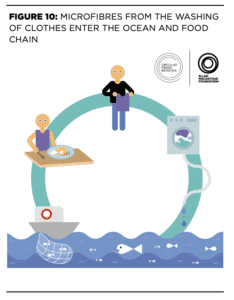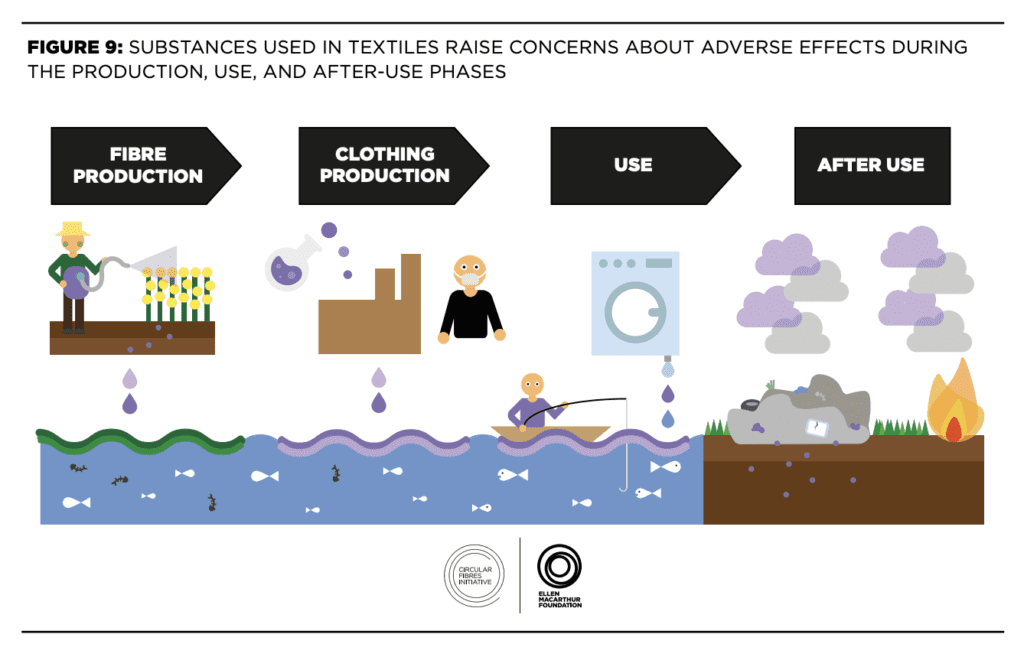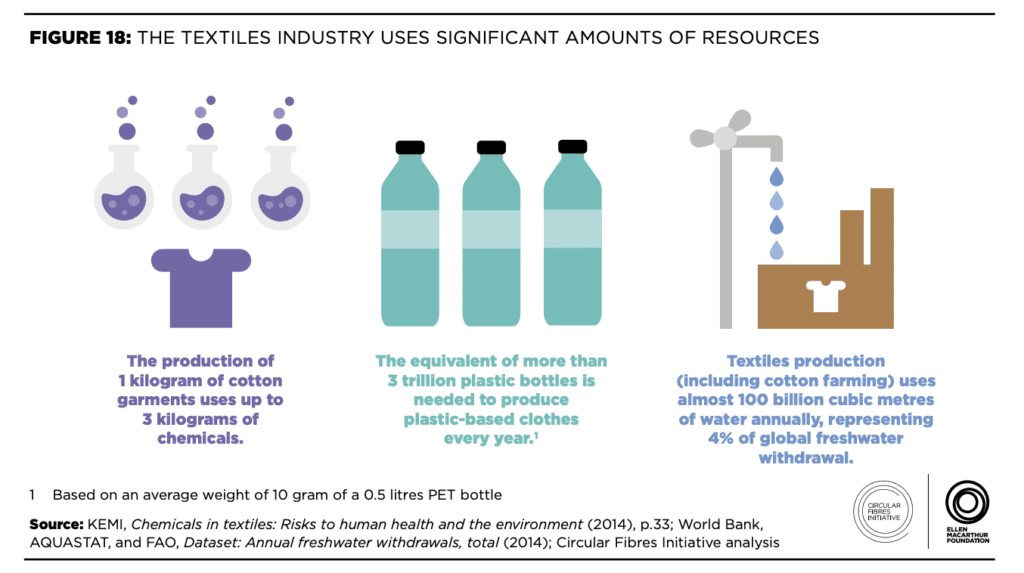Name : Mehr Un Nisa Javed
Professor: Nimrah Syed
Date:22nd Feb’2019
Partners: Samanta and Jennifer.
URL of the Presentation: https://docs.google.com/presentation/d/198ETLYYKEmfw-gvRuK8xV6XIXN7aCQVDHhfMdpfm9XQ/edit?usp=sharing
Objective: select different textile materials and present their properties, usage, trends and contributions in the industry along with documentation submission
The first thing which we did as the starting point for this research was that we first looked into our closets and checked what kind of fabrics do we have, which type are in excess, which we purchase in low amounts and which sort of fabrics we do not have at all. Then, For this presentation as we worked in a group of 3 where we spilt the work i.e. Samanta worked upon the synthetic fibers and their properties and usages and I worked upon the natural fibers i.e. wool, silk, cotton etc and their properties and usages. Finally, Jennifer picked the area of trends and diff. textile materials contribution in the fashion industry.
The most important natural fabrics which I chose were cotton (which is breathable and inexpensive), Linen (one of the oldest fabrics), wool(an excellent insulator of heat), silk(expensive but…) etc. I really enjoyed working on this assignment as I got to know about many new different fabrics which I was unaware of but they had great advantages. However, at the same time it made me really conscious about my usage of different fabric and how harmful they could be for the planet. For instance, when I recalled my recent purchase which was a fabric Viscose then I realized that how bad it could have been for our Mother Earth because the production solvent for Viscose is carbon disulphide which is highly toxic and its unsafe release of solvents in water can typically have hazardous impacts. This made me realize that we must make informative decision of investing in different fabrics instead of just picking up any random one by following the trend.
Overall, I really liked the overall coordination we had in a group and the way we all split the work to make it more efficient and share ideas which would have qn everlasting impact and would lead to more conscious decisions.
Here are some screenshot from the presentation to elaborate what it was basically about:
The first thing we did was that we looked at our wardrobes to see our consumption:
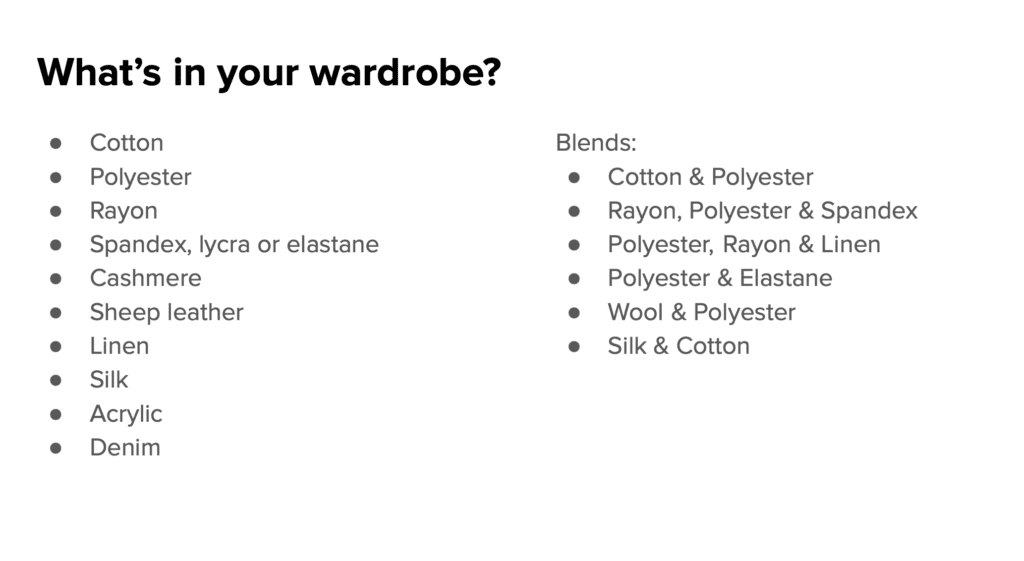
Next, we ran through the different types of fabrics available in the market:
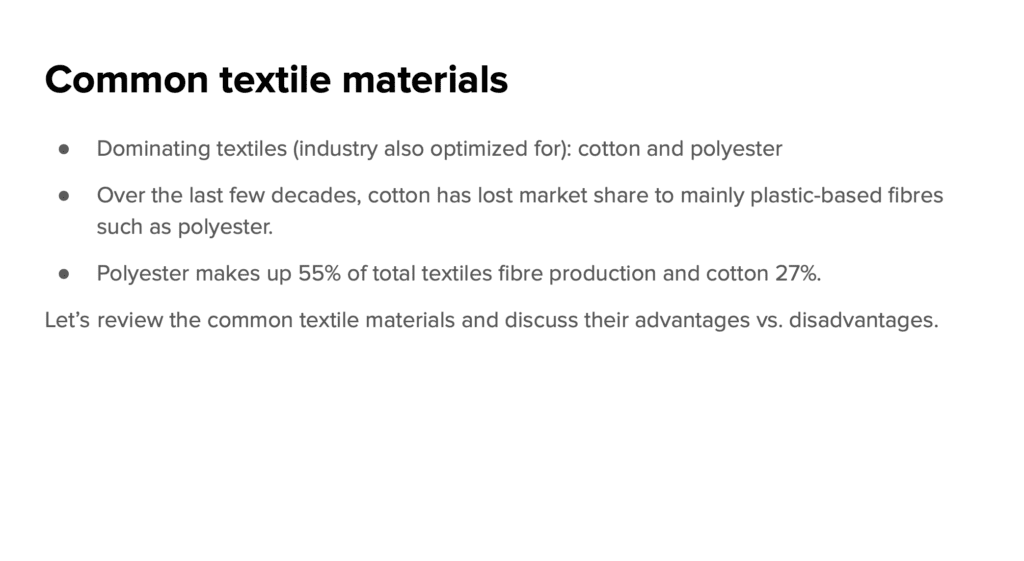
This shows that the most dominating one is polyester since its cheap and readily available due to its mass production
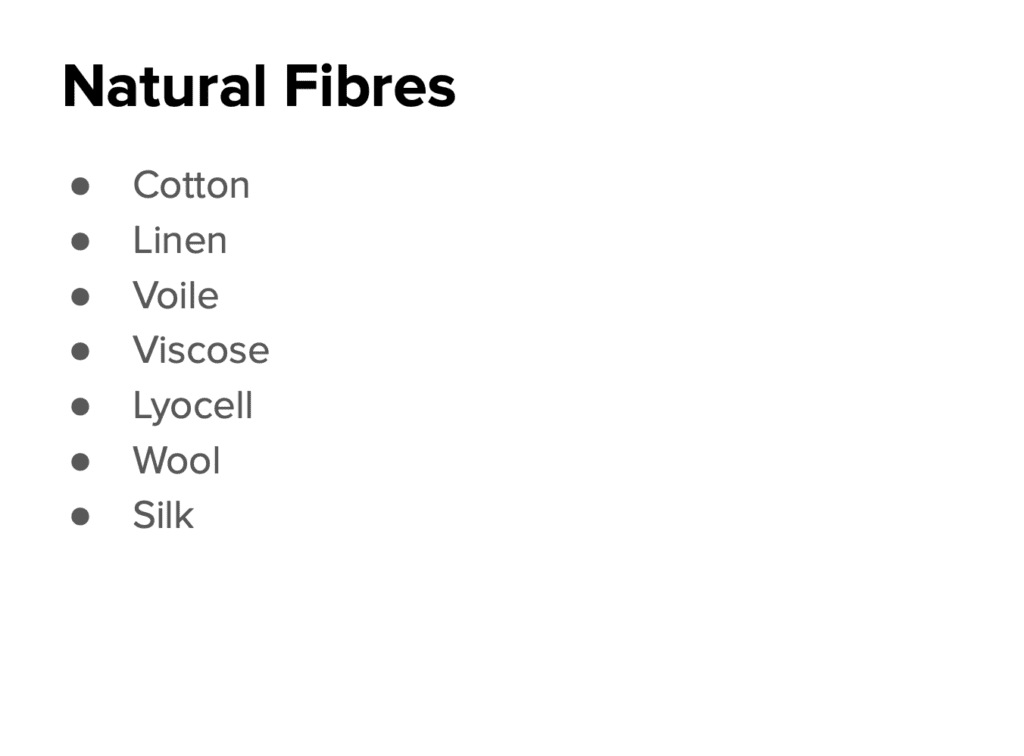
Then, we ran through the natural fibers which are expensive yet not very damaging for our planet
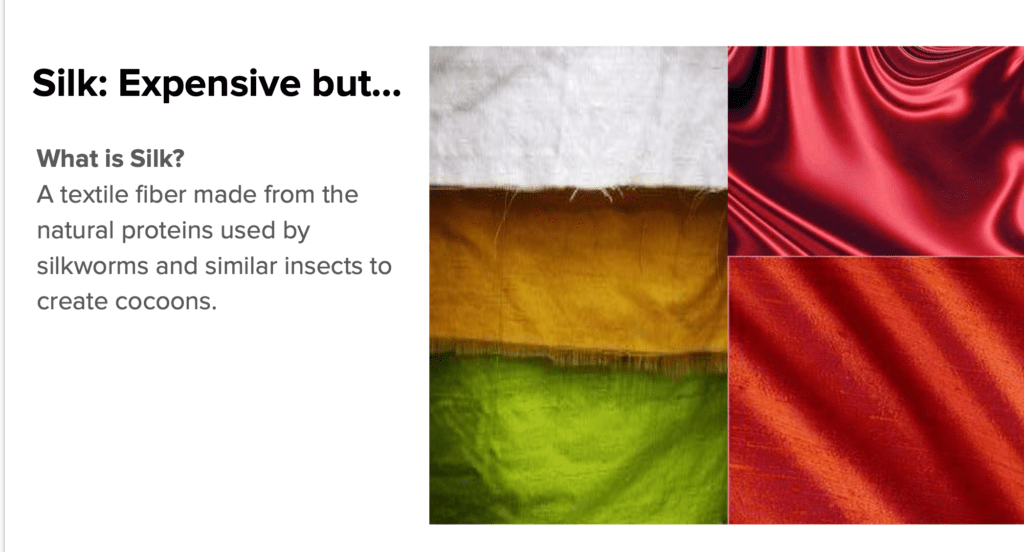
An example for it could be silk which is extremely expensive and can’t be used for a long period of time yet its consumption can still lead towards sustainability.
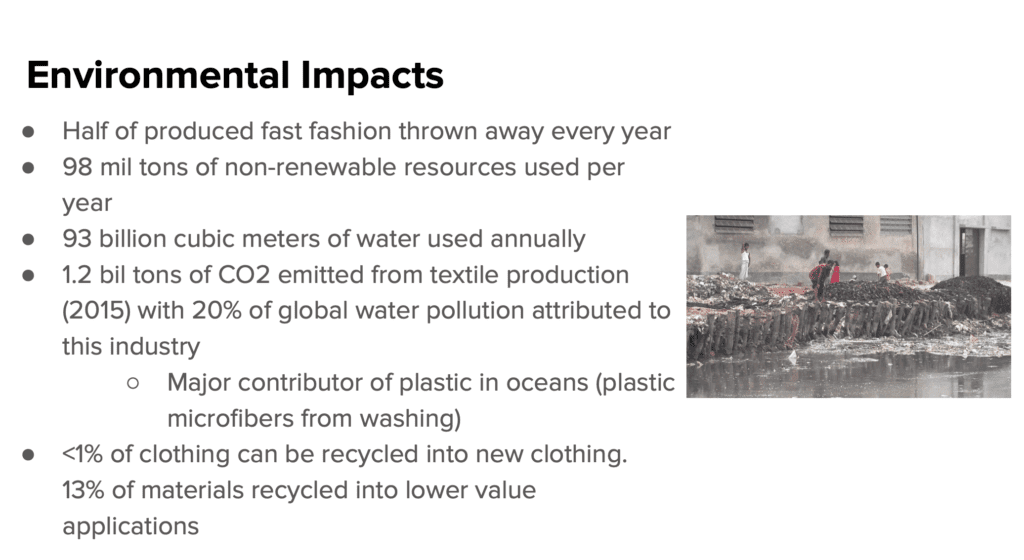
Later, we noticed the environmental impacts of various textiles. They have disastrous affects in all parts of the world because the recycling of the clothing is less than 1% which gives producers a chance to produce in bulks to satisfy the demands of the consumers.
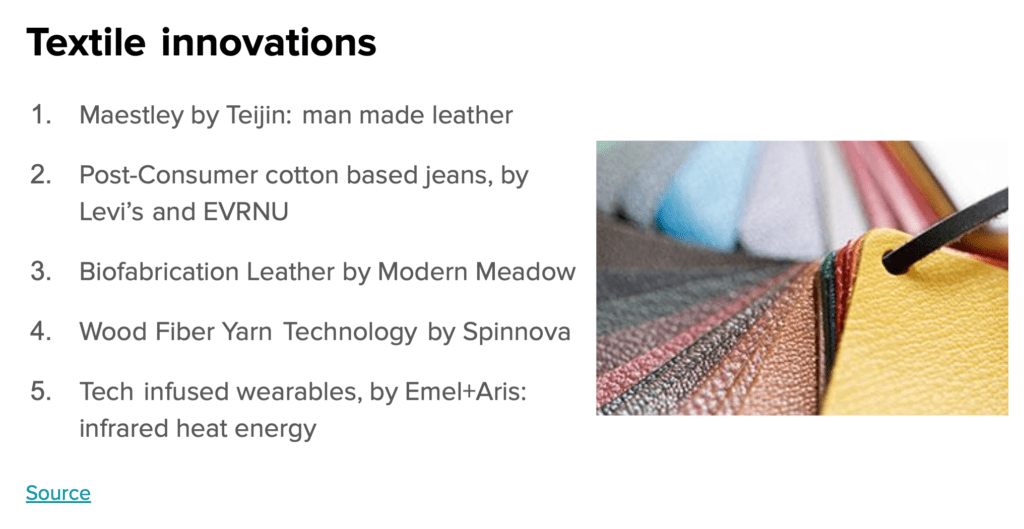
Finally, for the last part we worked upon the innovations in the textile industry. There have been quite a lot of advancements due to the wide use of technology around the world. Now, there are many sustainable practices being done around the globe so that our planet can be save. A few of the new textile innovations are Wood Fibre Yarn Technology, using infrared heat etc.
Note: Haven’t submitted late just did not know about the photos feature so updated my documentation (and it is posted on Friday because on the syllabus it did not say anywhere that it was due on the day of presentation so I was not aware of it or possibly because I missed the first class because I got enrolled late in the class).
